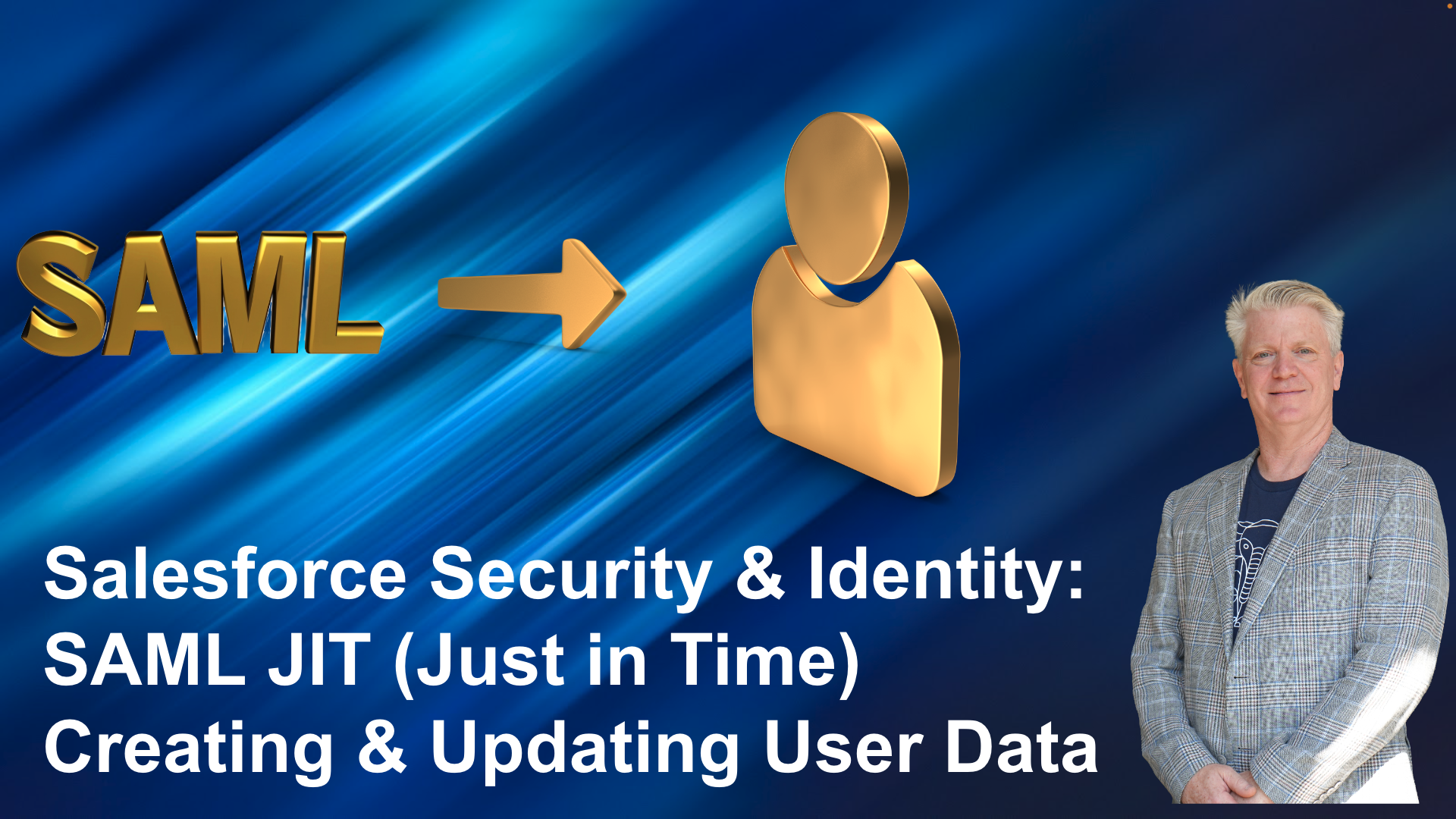

Keeping User Data Updated Automatically With Salesforce SAML JIT
Unlock the power of Salesforce Security Identity with SAML JIT (Just In Time) Single Sign-On. This video provides a dive into how SAML JIT facilitates the automatic creation and updating of user data. Discover the step-by-step process of configuring and implementing this feature to keep your user data synchronized and up-to-date across different Salesforce organizations or between an Identity Provider and Salesforce.
What you’ll learn:
-Understanding the SAML JIT Single Sign-On Mechanism
-Step-by-Step Configuration of User Data Sync
-Implementing a Custom SAML JIT Handler
-Verifying Automatic User Data Synchronization

Deep Dive into SAML Authentication
Join me as we embark on a journey exploring SAML (Security Assertion Markup Language) and its integral role in Single Sign-On (SSO). Using Salesforce-to-Salesforce SSO as our example, we break down the steps and terminologies associated with this authentication method.
Highlights:
-Overview: Introduction to SAML and its connection to SSO.
-Diagram Walkthrough: A visual representation of Salesforce identity provider (IDP) and service provider setups.
-Key Terms: Unraveling terms like user access, redirection, SAML assertions, relay state, and more.
-The Magic Behind the Scenes: A detailed look at the back-and-forth communication, ensuring secure and seamless authentication.
-Demo: Witnessing SAML in action using the Salesforce environment
-Deep Dive: Scrutinizing the details of SAML requests and responses.
-Security: Digital signatures and their significance in ensuring a safe SSO environment.

Unveiling Salesforce Security: The Intricacies of SAML Configuration and SSO Flow
In the realm of Salesforce, understanding the mechanics of Security and Identity with Single Sign-On (SSO), can be important. Let's delve deep into the interplay of Salesforce when it operates as a Service Provider under an external Identity Provider (IDP), highlighting the key configurations and flows.
As we progress in this series, we will delve into the technicalities and finer details. However, it's essential to have a solid understanding of these fundamental concepts before diving deeper. Stay tuned for a more in-depth exploration in my upcoming videos/blogs!